Eaton contactedCafe de Lechewith the offer to depict Martin Luther King Jr. on the plywood covering their shop.
Over the course of an afternoon, Eaton created a powerful portrait of Dr. King.
Sadly, the mural of Dr. King did not last.

One night, a woman rolled white paint onto his face and wrote anti-Black slurs onto the painting.
Eaton, however, was undeterred.
Upon finding out that the portrait had been defaced, he arrived shortly after and created another painting.
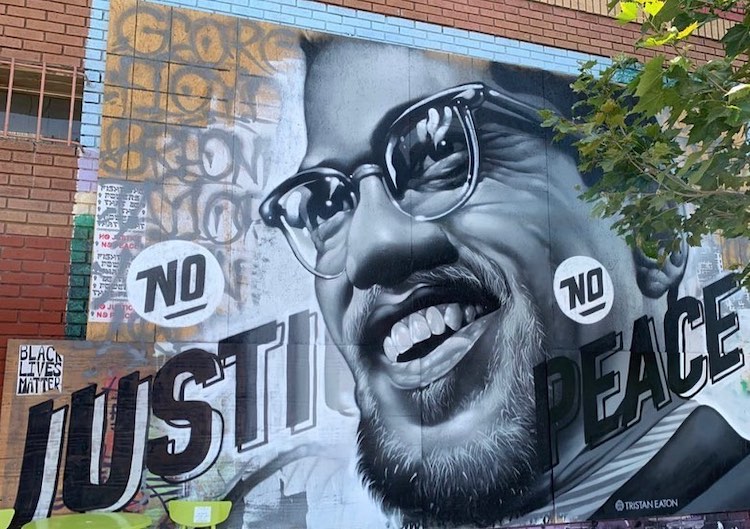
This time, it was of Malcolm X.
The street art is still up and on view at the intersection of Avenue 50 and York boulevard.
How did your mural of Martin Luther King Jr. come about?
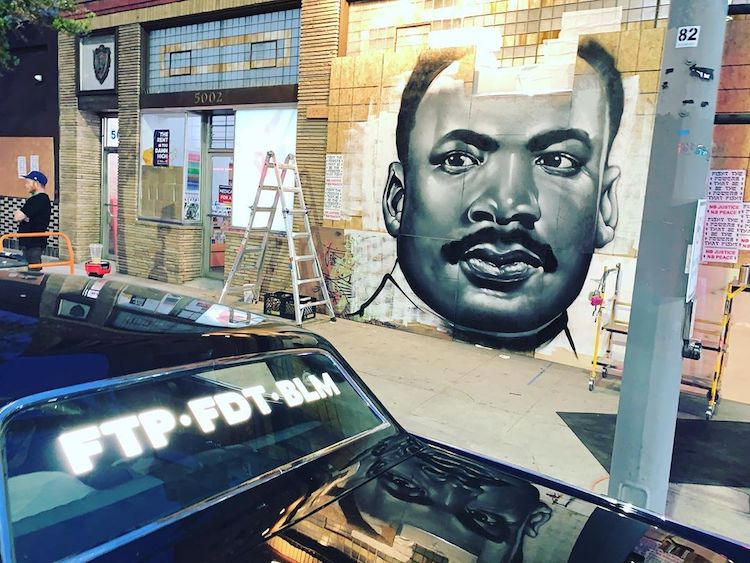
I thought, Okay, we need to do something larger, visually, to show solidarity.
And they were like, Okay, cool.
So, I literally painted it in one day.
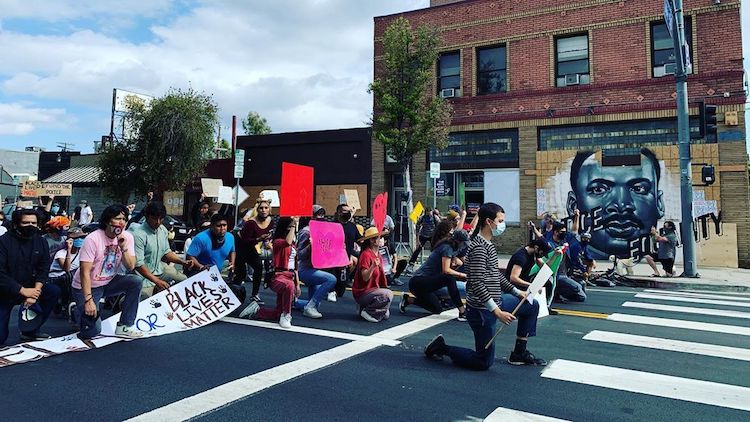
I think half a day, even.
I started around 2 PM and painted Martin Luther King.
It was a great, beautiful moment.
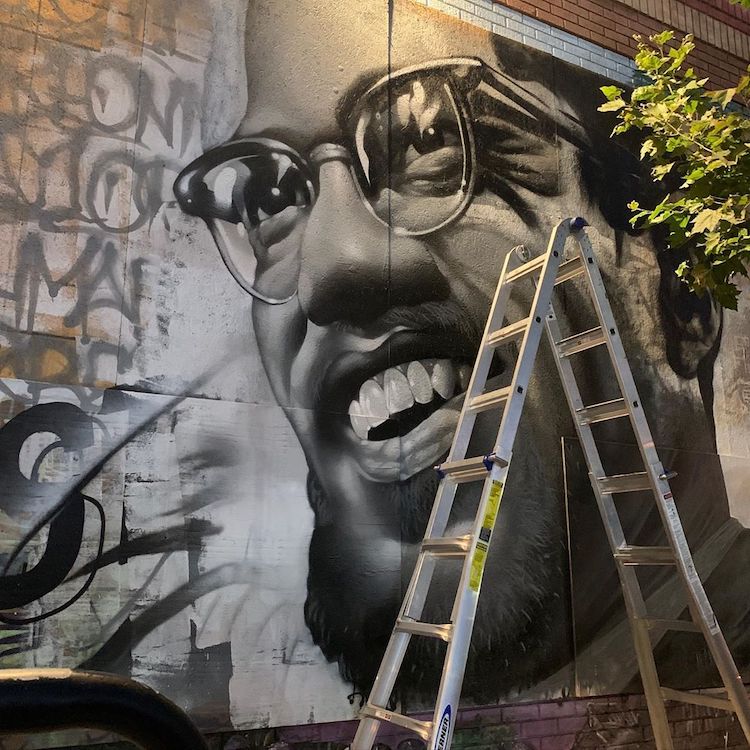
With the mural vandalized, how did you decide to depict Malcolm X?
About 45 minutes later, I got the message that the MLK mural had been defaced.
I told the owner of the building, Okay, I’ll be down there in half an hour.

Photo:Jeremy Deputat
People are tired of waiting for change, so now it’s time to demand it.
And, I felt like following up MLK with Malcolm X fits that tone.
You had some additional help with the Malcolm X mural, correct?

Photo:Jeremy Deputat
I had him paint the names of victims of police brutality in the background.
Photo:Jeremy Deputat
What role do murals, and street art in general, play in our society?
There’s a huge spectrum when it comes to public art, street art, etc.

Photo:Jeremy Deputat
you’re able to change the world in a simple way just by painting it.
That’s important because public art can also memorialize historic moments and historic people.
These racists can say, This is how we think it should be now.
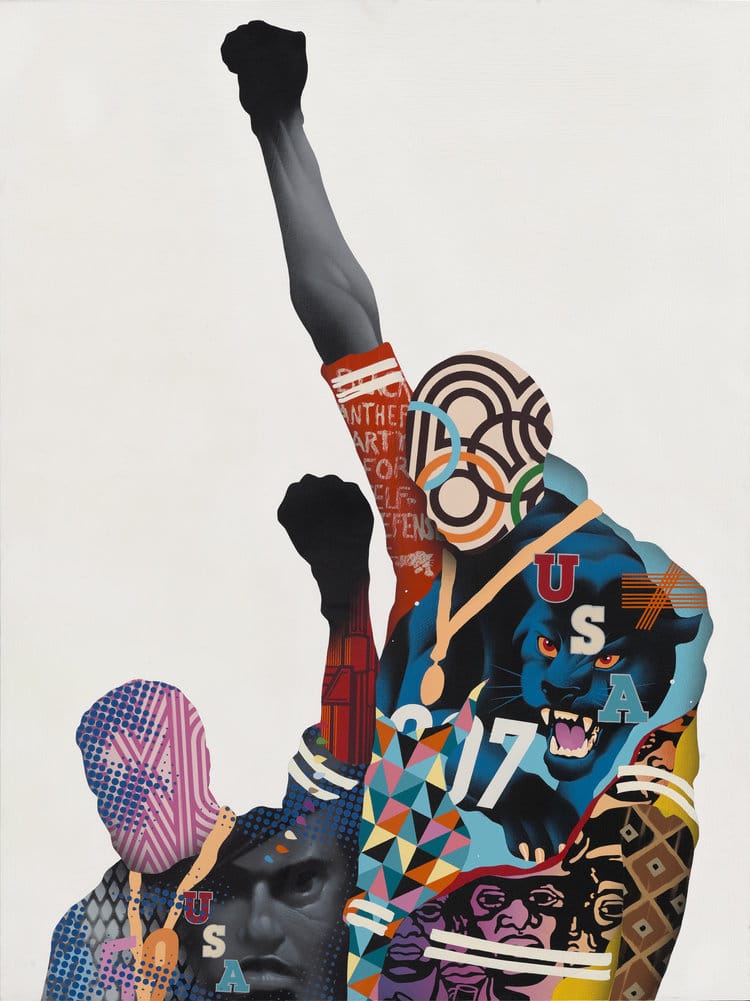
I think it’s time for a sea change.
I’m happy to see the Confederate flag coming off the Mississippi flag.
I’m happy to see all of these things change because they’re symbols of a racist slave-owning nation.
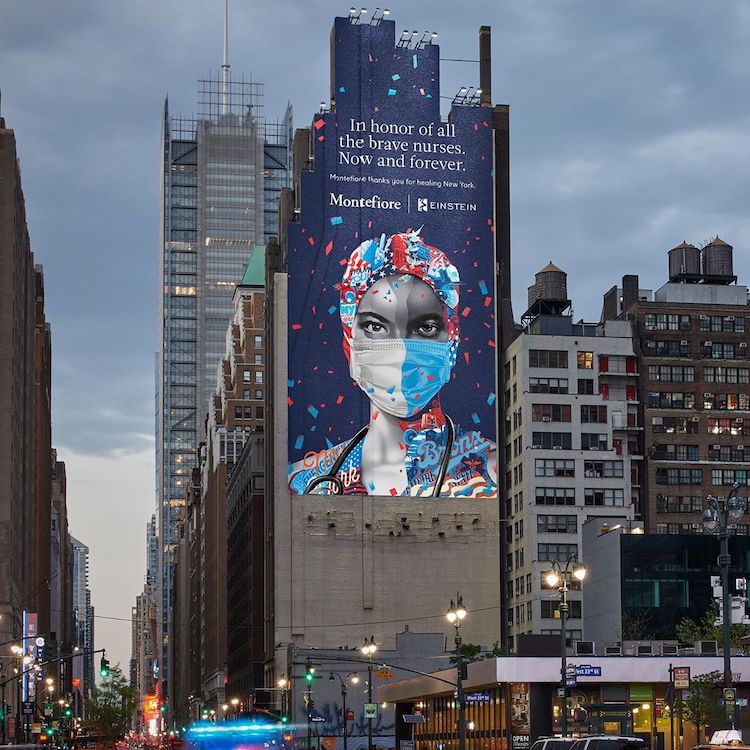
There are things that you want to say that you don’t have the words for.
And that’s why we paint.
Has anything changed for you now that the mural has gone up?
I am very proud to say that I look out for younger artists.
I look out for all kinds of artists that need a leg up.
There aren’t enough people of color doing mural work.
There aren’t enough women doing mural work.
What else have you been up to?
Anything exciting on the horizon?
I did a project to raise money for theMuseum of Graffitiin Miami.
It’s run by Alan Kat and MARE, who are both artists of color who started the museum.
Years ago, I did a painting about the Black Panthers that touches on the larger history of protests.
The idea was to remind people that protesting is in our blood.
It’s nothing new.
This is how big change happens.
We raised $18,000 for them.
I’m organizing a mural right now in New York.
The work that I’ve made for them is on a 13-story-tall mural by Madison Square Garden.
My team and I are very fortunate.